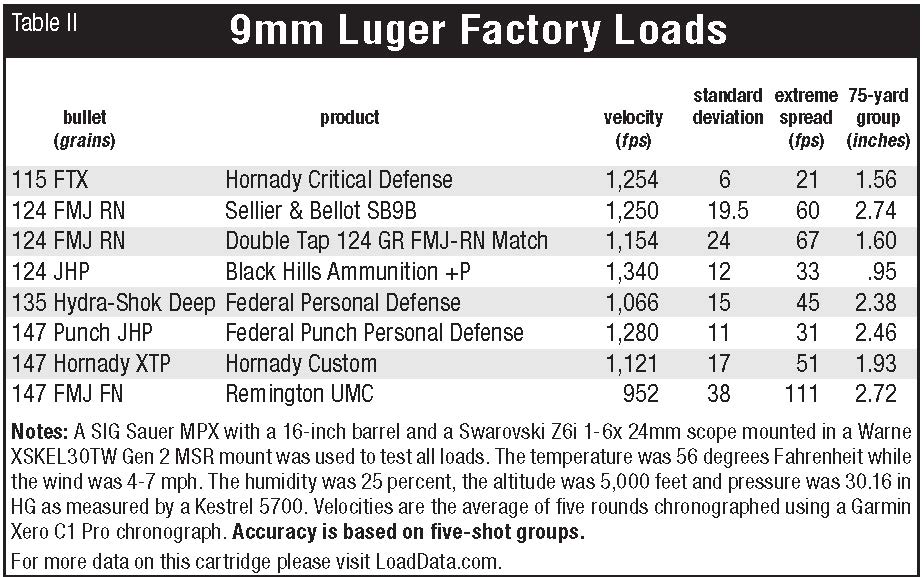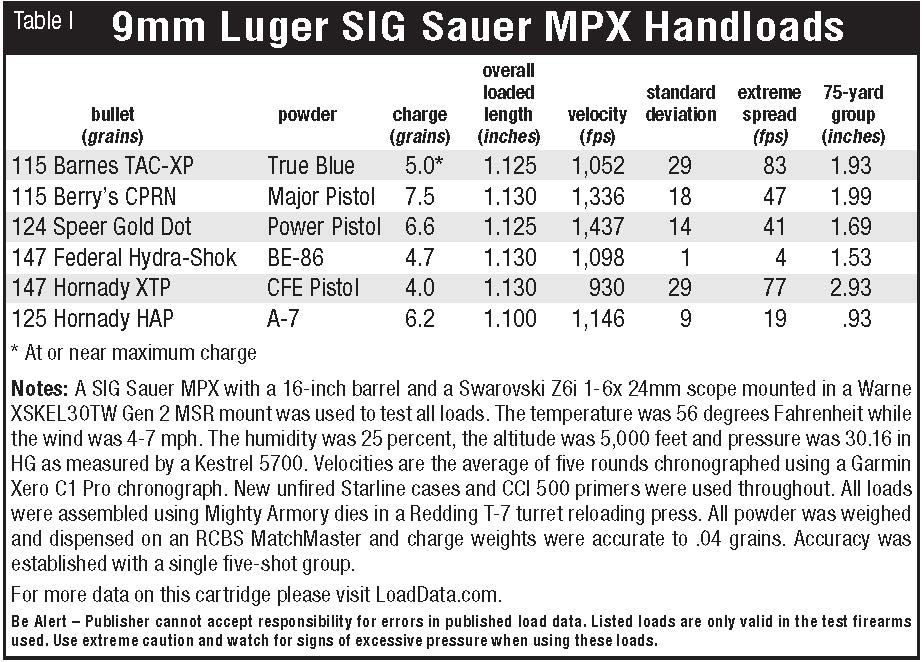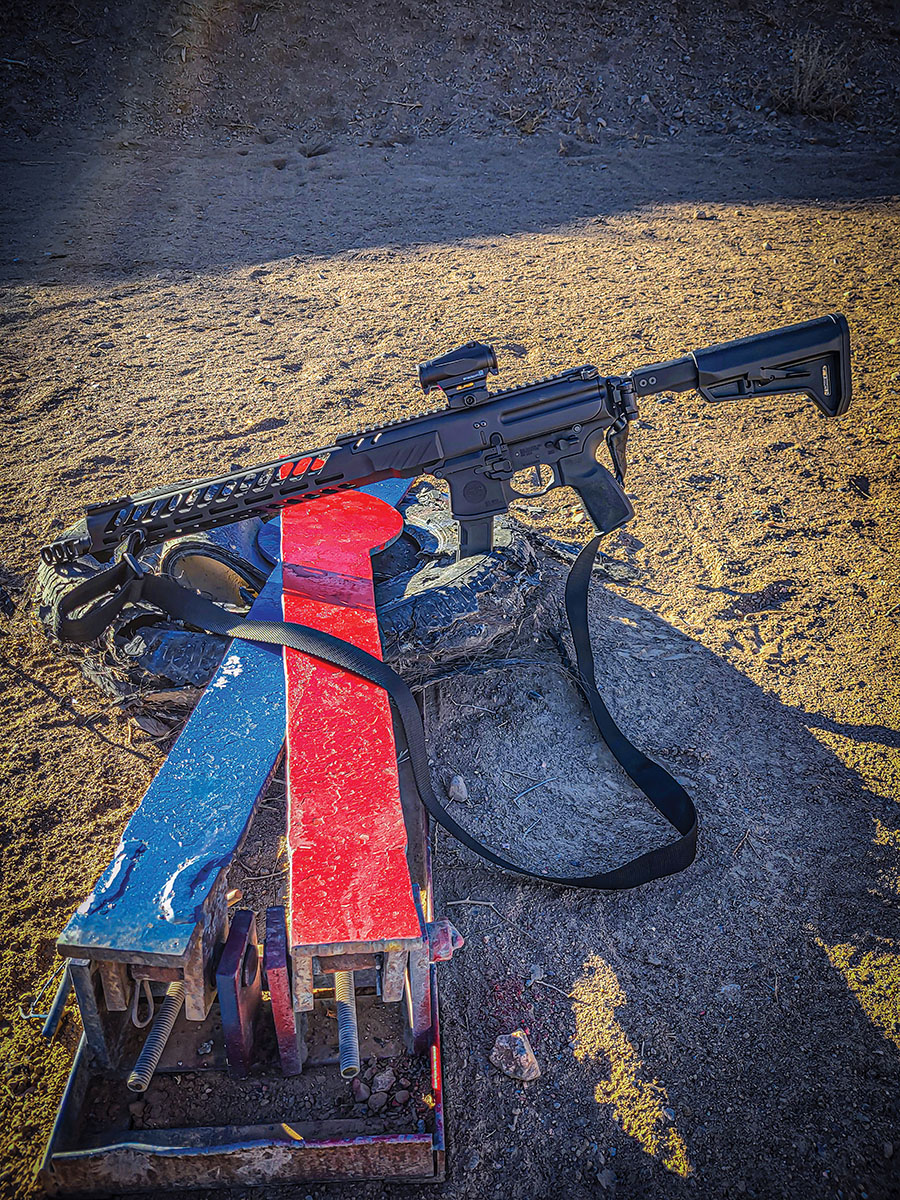
The SIG MPX PCC was designed around competition shooting, it boasts of many practical features.
When it comes to pistol caliber carbines, my mind wants to think of Winchester 73s or Marlin 1894s. Short, light and quick-handling little carbines chambered in cartridges such as 357 Magnum 38 Special or 45 Colt, a personal favorite of mine. However, these days when you hear pistol caliber carbine (PCC), for the most part, folks are referring to modern pattern rifles chambered in calibers such as 9mm Luger, 40 S&W and 10mm Auto. When it comes to these chamberings there is no doubt that 9mm Luger is the most popular of all.
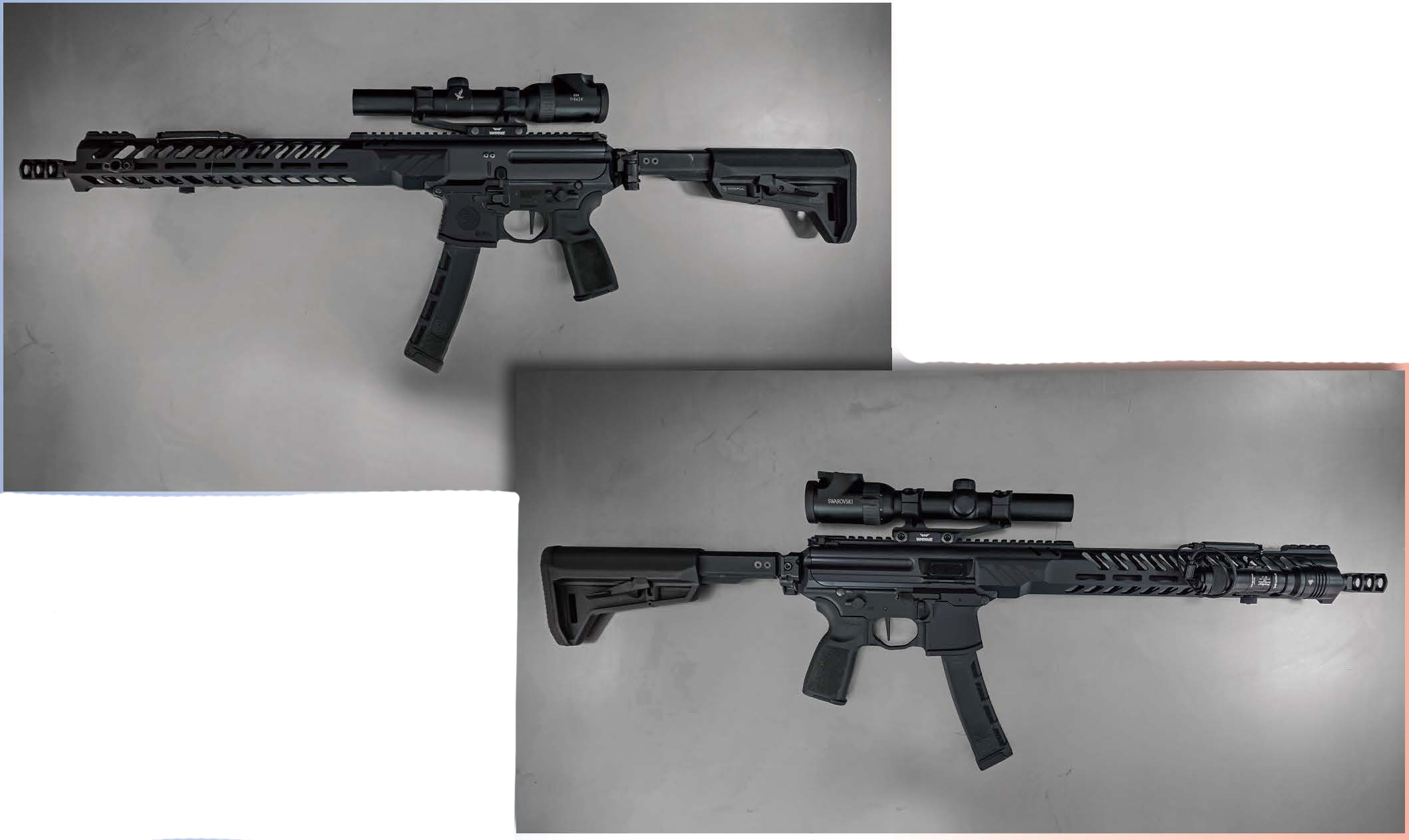
The SIG MPX features similar controls to AR pattern rifles, making the manual of arms and the operation of the firearm a quick and easy learning experience for those who have never handled one.
This is all for good reason as over the years the popularity of these handy little carbines has skyrocketed. They are used in competition circles in both IPSC and USPSA, as well as various other local competitions, from actual matches to fun shoot-offs among friends on the weekends. The subject of this article the SIG Sauer MPX PCC, cut its teeth as a competition-ready rifle right out of the box. It also boasts many desirable features, from the Timney trigger to the sleek M-LOK handguard and fully ambidextrous controls. It features a 16-inch barrel, 1:10 twist and a very nice three-port muzzle brake to help keep it shooting flat. Unlike many other PCCs on the market today this one operates on a short-stroke gas piston, making for a controllable rifle especially when compared to simple blowback-operated carbines. These factors help make this rifle competition-ready.

The SIG MPX comes from the factory with a fully ambidextrous extended charging handle, safety selector, magazine release and bolt catch, making it an excellent option for both left- and right-handed shooters.
There is no doubt that SIG Sauer put a lot of thought and effort into this handy little rifle, they also received a lot of feedback over the years and SIG has put that into this rifle. They have incorporated feedback from professional shooters such as Lena Miculek and Daniel Horner. This has resulted in a highly refined product right out of the box that is built for longevity from the design of the trigger to the operating system. Officially, there are two generations of the SIG MPX however, some of the changes made over the years that have been slowly implemented, have lead many folks to refer to a 3rd generation. The primary differences from the first generation as compared to the second and third are the magazines, slight changes in the feed lips and follower were made to increase reliability. This is something shooters should be aware of when they go to purchase magazines for their rifle. Like most deals if it’s too good to be true, it likely is and care should be taken to ensure you are getting a reliable product. However, what we are talking about here is the latest iteration of the SIG MPX PCC, which many shooters refer to as the 3rd generation, which is simply the latest and most up-to-date model available at the time of this writing. It is easily discernable from other generations as it features the Timney flat-faced trigger as well as an M-LOK handguard.
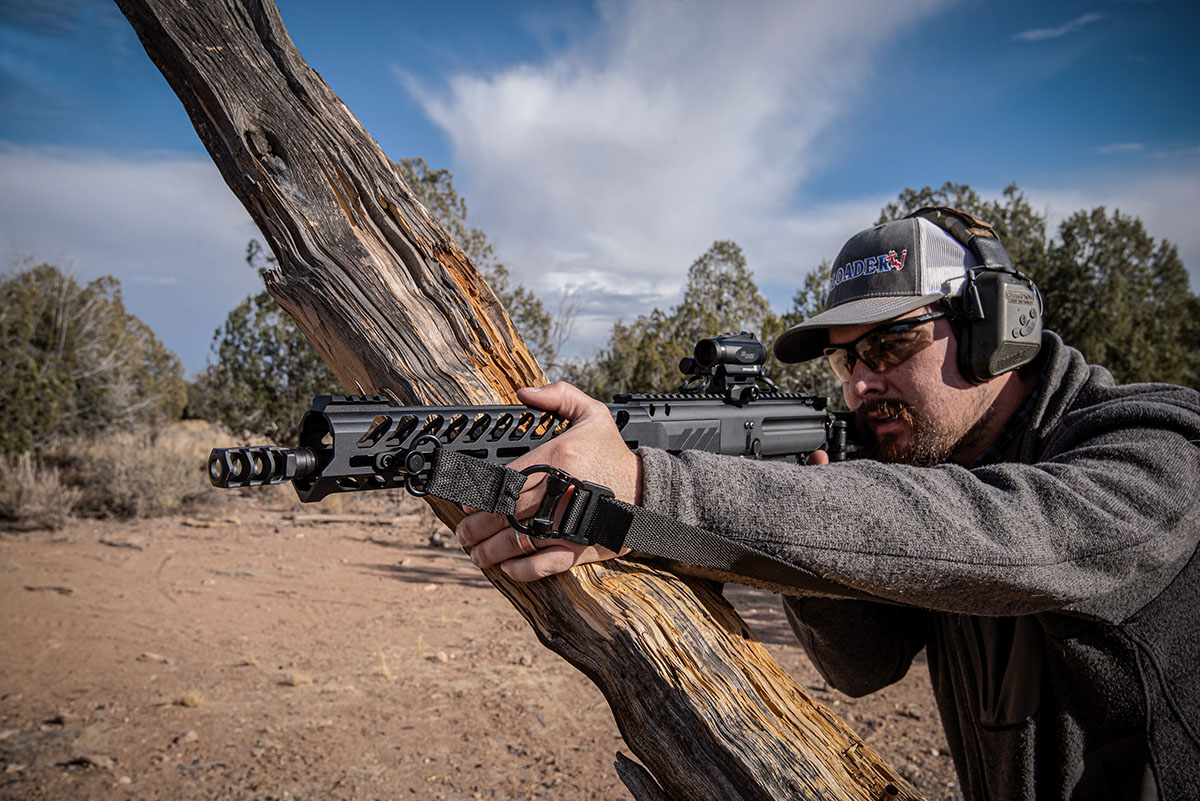
While shooting the scrambler course at Gunsite the SIG MPX earned the fastest time of the day. The course involves moving from seven different locations and engaging targets at distance from modified shooting positions.
The rifle itself weighs in at 6.6 pounds unloaded and with the addition of a Swarovski Z6i 1-6x24 in a Warne XSKEL30TW Gen 2 MSR Mount, that weight goes up to 7.7 pounds. This optic was added for accuracy testing of the firearm. A little magnification certainly helps the group size on paper. Plus, living in the wide open country, a magnified optic can be very beneficial. The Timney single-stage trigger broke at a clean 4 pounds 1 ounce on a Wheeler Engineering Professional Digital Trigger Gauge. Perhaps equally important is that there is no creep or takeup, and the reset is short and positive. This lends itself very well to rapid follow-up shots and fast-paced shooting, as seen in many competition settings.
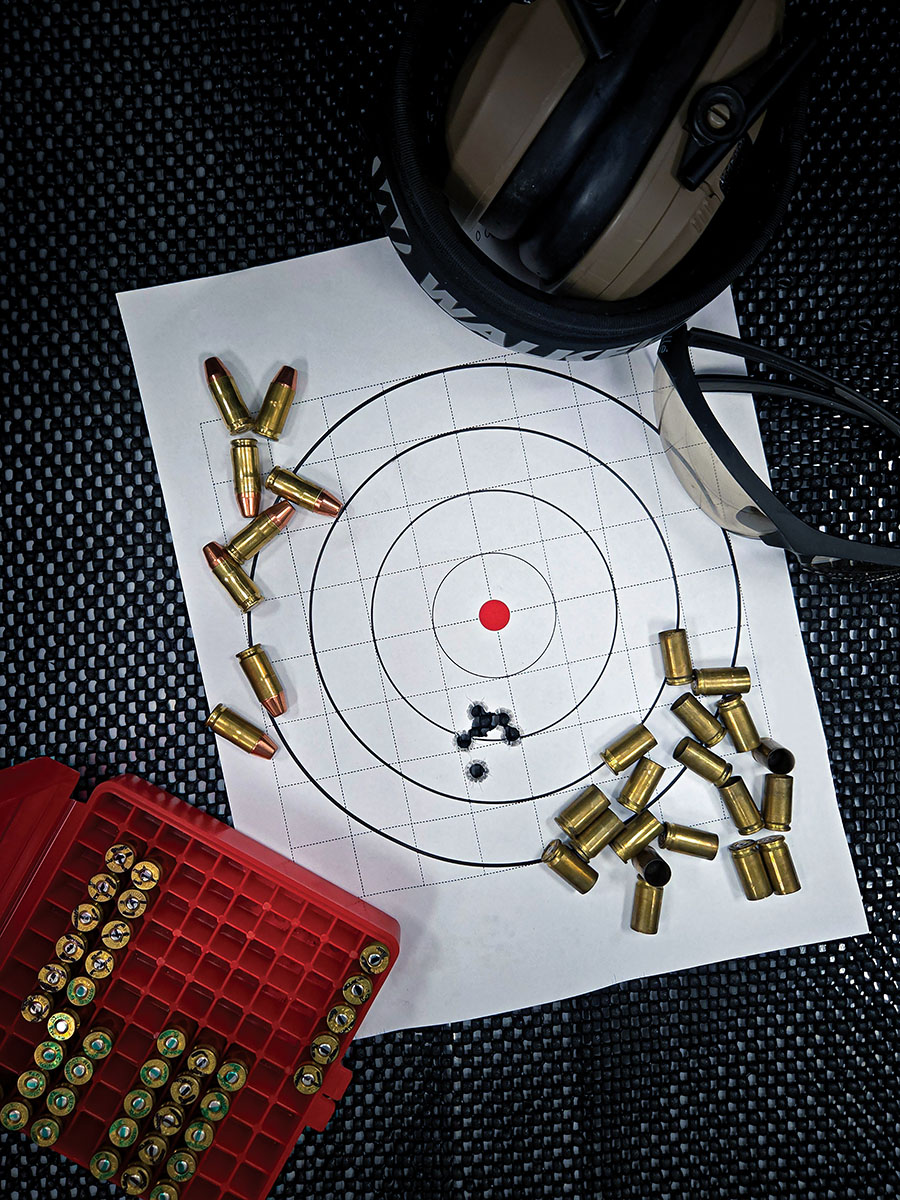
One of the best handloads tested was using Accurate No. 7 powder with the 125 Hornady HAP (Hornady Action Pistol) bullet. It assembled a group size of just .93 inches. This bullet is an excellent choice for competition shooting thanks to it’s consistency, accuracy and price.
The first order of business was to test the reliability of the rifle itself; nothing makes it to print without first passing a rigorous reliability test. Thankfully, this part is rather fun, it involved shooting
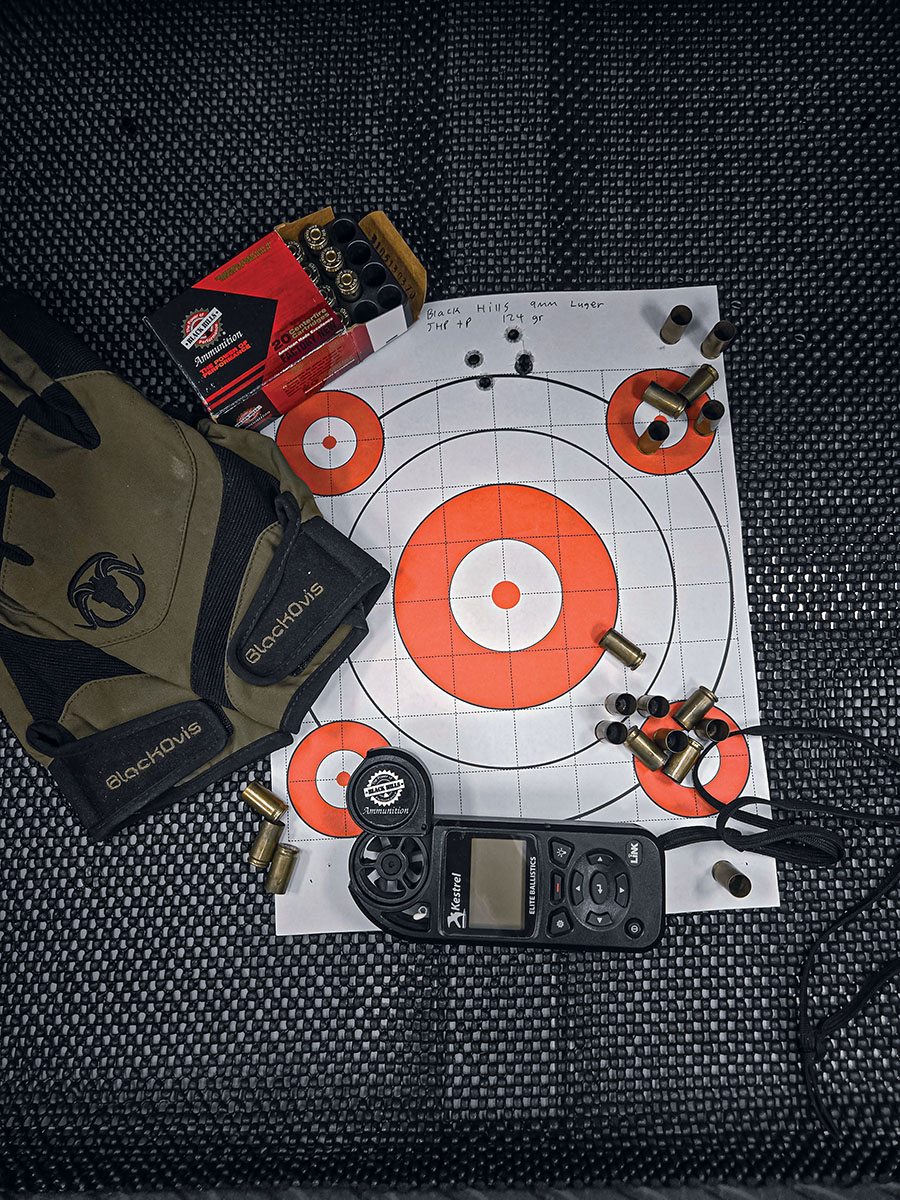
The most accurate factory ammunition tested by far was from Black Hills Ammunition, the 124-grain JHP +P, which functioned extremely well in the MPX and would be an ideal choice for self-defense situations.
about 500 rounds of various types of 9mm Luger ammunition, mostly what was on hand as far as handloads go. For this test a wide range of hollowpoints, roundnose and even some powder coated cast bullets from Lyman mould No. 356637 were all run through the firearm without a hitch. One thing that was apparent during this testing was the difference in point of impact when switching loads or ammunition types. The difference was all the more apparent at longer ranges. This led to me settling on a single ammunition type to be used for field shooting - a handload using Alliant BE-86 powder and the 147-grain Hornady XTP for a projectile. Over the years, I have come to appreciate that particular bullet in the 9mm Luger for not only it’s terminal performance but also it’s reputation for accuracy. In addition to that, it is easy to enough to keep subsonic, which is helpful when shooting with a suppressor.
Since the rifle is a piston-driven gun, it should lend itself well to being suppressed, and I wanted to take this gun into the field for more testing and evaluation. The addition of a suppressor would be a nice touch as I don’t always have time to put earplugs in while hunting or out on the back of a horse tracking coyotes or cows. The only downside to this is the thread pitch that SIG settled on for the MPX, which is a metric thread pitch, M13.5x1LH. I had to order that adapter for my SilencerCo Omega 45K suppressor. I have other suppressors but this one seemed to be the best fit and the adapter was in stock, which aided in the decision to use this suppressor for the MPX.

While running through the indoor, outdoor and low-light simulators at Gunsite the SIG MPX performed extremely well. The 35-round capacity of the magazines is a big bonus as all simulators could be cleared without the need to reload.
After receiving the adapter in the mail about a week after ordering, I was quite eager to get my suppressor mounted. I immediately chucked the rifle in a vice and attempted to remove the muzzle device. This resulted in some frustration and confusion, after spending much more time than I would care to admit, I realized that this rifle had left-handed threads. Meaning “righty tighty and lefty loosey” doesn’t apply here, on occasion this still confuses me when swapping muzzle devices on this rifle. However, with this newfound knowledge, I mounted the suppressor and was off to the races. The rifle functioned very well suppressed, and despite this suppressor not having a flow-through design, there was not nearly as much gas blowing back as I had anticipated. This is likely thanks to the barrel length on this model.
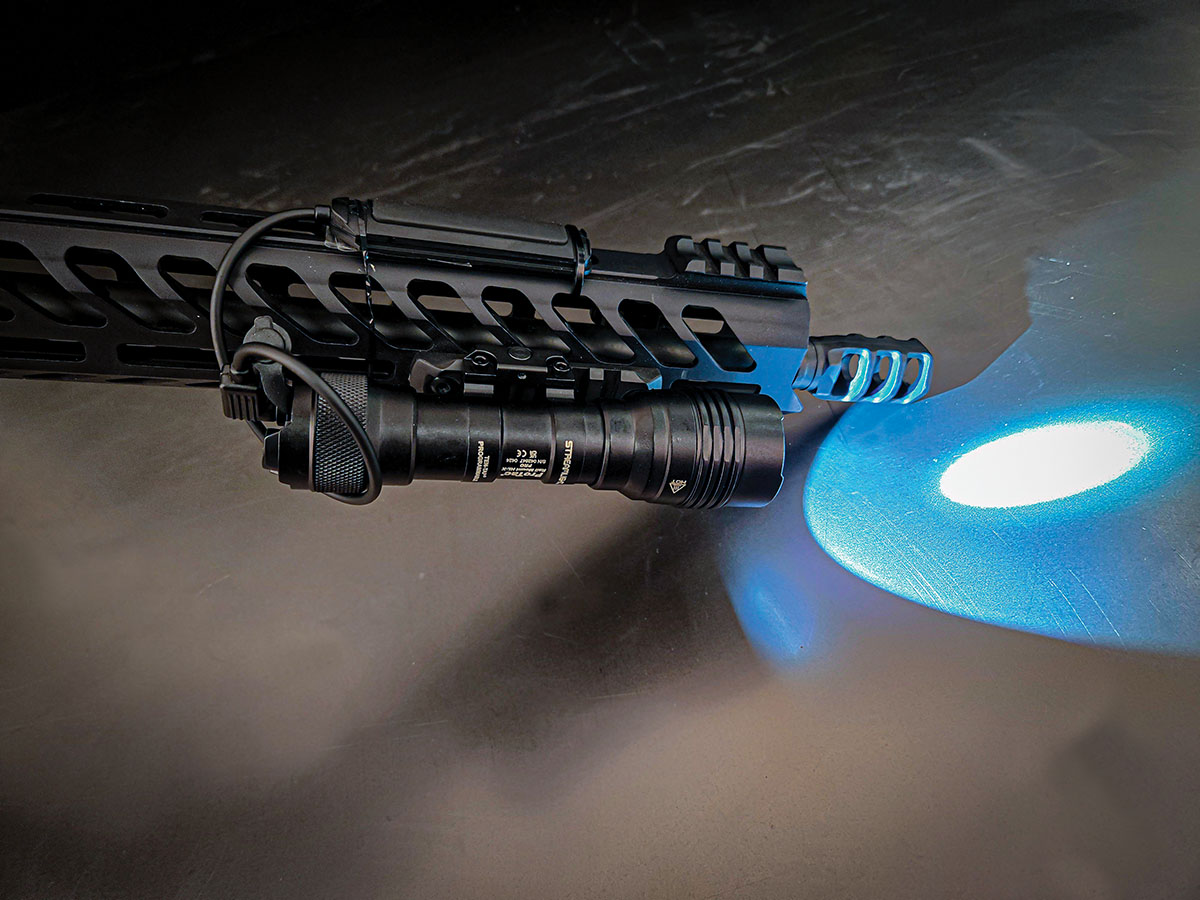
The Streamlight ProTac HL-X proved invaluable in the low-light shooting conditions of some of the simulators and shoot houses at Gunsite. This light has been used on multiple rifles and evaluations and has held up extremely well.
The rifle was also taken out numerous times for field-style shooting and even some jackrabbit hunting. This required creative modification of the magazine to comply with local game laws but nonetheless, the rifle makes an excellent choice for rabbit hunting, especially for those of us who are familiar with AR pattern rifles. The transition from an AR-15 to the SIG MPX is nearly seamless, featuring very similar feel and controls. The folding stock was a welcome feature for this task, it made storing the rifle easy. Riding around in a pickup truck with an over-eager labrador retriever who thinks the entire backseat is his can make retrieving a rifle a challenge. This made me greatly appreciate the folding stock and allowed the rifle to be stowed in the front of the truck.
All in all the rifle performed well as far as reliability goes, several cleanings and oilings went by in between outings in the field and between shooting sessions. Finally, it was time to test the accuracy of the firearm now that it was broke in and had some rounds down the barrel. I started out by taking some of my favorite handloads in other firearms and testing those first. The results can be seen in Table I for handloads and Table II for factory loads. All in all, I was very pleased with the performance and some loads stood out among others with low standard deviation, extreme spreads and produced respectable groups.
After all of this testing, I would typically conclude that I have more than enough information, time and experience with the rifle to write an in-depth review. However, the opportunity arose to take this rifle to an event at Gunsite. There, I could run the SIG MPX in some friendly competitions/shoot-offs and put it through a series of outdoor and indoor shooting simulators. Needless to say I jumped at the chance. To keep in line with the Gunsite event, I swapped out the Swarovski 1-6x optic for a SIG Sauer Romeo 4XT-Pro 1x 20mm red dot. A Streamlight ProTac HL-X was also added for use in the low-light shoot houses. I opted to remove the suppressor in favor of the factory three-port muzzle brake. I also re-zeroed the rifle using Double Tap 9mm Luger 124 grain FMJ-RN Match ammunition. It is an excellent commercial load that proved accurate and reliable in the MPX. Without the suppressor, subsonic ammunition was no longer needed, and given the economy and performance of this loading, it was an easy choice.
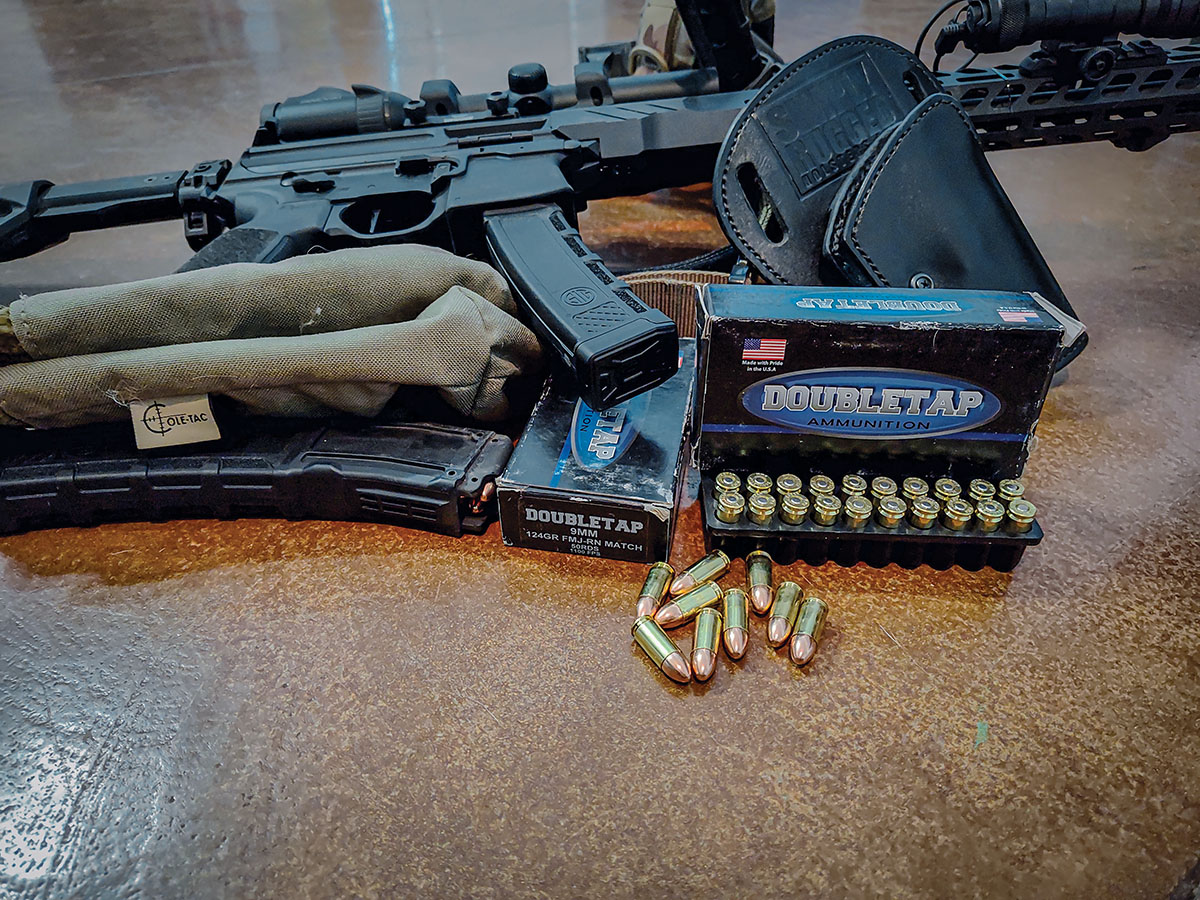
While attending Gunsite, the SIG MPX was fed a steady diet of Double Tap 9mm 124-grain FMJ-RN Match ammunition. It was economical and proved to be reliable and accurate in this rifle.
Over the next three days, the rifle was thoroughly tested on the flat range, engaging both paper and steel targets. Throughout the event, several competitions and shoot-offs took place, where the MPX performed exceptionally well. It recorded the fastest time on the scrambler course, which features a variety of steel targets set 75 to 150 yards downrange. The course requires shooters to move between seven positions, engaging targets from each – making it a highly practical test. Additionally, the rifle was run through multiple shoot houses, both in daylight and low-light conditions; having a weapon-mounted light was crucial to success in the low-light conditions of some of the shoot houses.
After those next three days I also realized not only is the MPX suitable for competition it also makes an excellent home defense gun as well. This makes perfect sense if you compete or train with that firearm regularly; why wouldn’t you reach for it if the perviable bump in the night occurs? A slightly shorter barrel may be preferable to the 16-inch barrel on this gun, especially if a suppressor is to be added. It still performed well in the shoot houses and with good tactics and practices, a shooter shouldn’t feel handicapped.
This is a virtue of the MPX that was proven through practical drills and training exercises while attending the three-day class at Gunsite. Having 35 rounds of 9mm Luger in a rifle platform is a huge advantage over the 15 or 17 rounds in a handgun beside the bed. Throughout all of the testing and evaluation process, including awkward shooting positions and stressful scenarios at Gunsite, the rifle never malfunctioned. At this point, the rifle has proven to be extremely reliable with over 1,200 rounds through the firearm, it has yet to experience a malfunction. No doubt a good cleaning and lubrication routine aided this but either way it is impressive.
All in all for those looking for a high-end PCC, that is flat shooting, suitable for competition use and can pull double duty as a home defense gun the MPX checks those boxes nicely and is arguably better than a lot of other options in this category. In addition to that, it is a lot of fun to shoot, and whenever shooting with friends, a rifle is a popular choice. Thanks to Its familiar, fully ambidextrous AR-like controls, low recoil, ease of loading magazines and accuracy, it always leaves a smile on the faces who have tried it.






